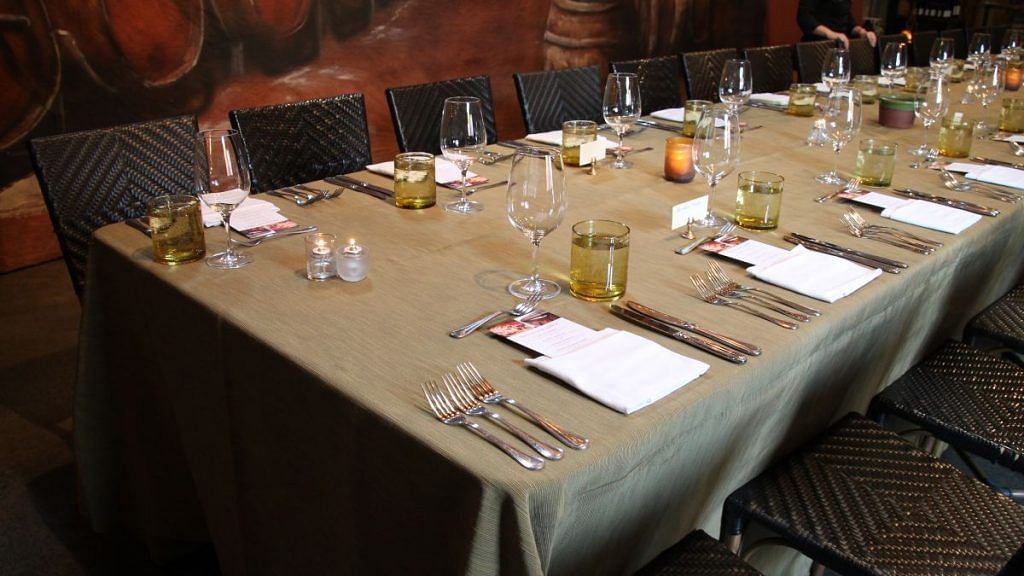Choosing what to eat for lunch is usually a simple decision.
But imagine if you had to select what nearly 3,000 world leaders eat for a whole week in a snowy mountain town in Switzerland. This is the challenge we set ourselves on a hot summer’s day – six months prior to our Annual Meeting in Davos 2020.
Food service is not a core activity of the World Economic Forum, but it is an important one. The Davos week is intense, with many participants up from dawn until late. Working breakfasts and food eaten on the go between panel discussions and bilaterals are common. Providing nutritious foods that support brain health is important to ensure participants make it through the long and intense days in peak form.
So what would you choose? And would sustainability change your choice?
Environmental impact of food
Food production accounts for around one-quarter of global greenhouse gas emissions, with a significant portion of these emissions coming from animals (directly, or through the feed and land required to grow them).
On the demand side, consumption patterns aren’t aligned with optimal health or environmental outcomes. According to the World Health Organization, obesity is on the rise and animal protein consumption is above recommended intake levels in Europe (where Davos takes place). Furthermore, up to one-third of all food is lost or wasted, resulting in loss of critical nutrients, wasting of scarce resources, and unnecessarily increasing emissions.
The good news is that we are beginning to see change: agriculture companies are starting to reduce their environmental footprints; plant-based burgers are becoming far more accessible across the US and Europe, and sophisticated technologies help reduce food waste.
The Forum is committed to being a leader in practising sustainability, and this will be reflected on our menus. We aim to provide participants with healthy and sustainable options, highlighting the impact of individual consumer choices on their personal wellbeing as well as the health of our planet.
So, what’s for lunch?
1. Fresh, regional, plant rich
Careful selection and sourcing of the ingredients used in the menus is critical to deliver a sustainable Annual Meeting. This is the second year the Forum is working with a Swiss-based start-up specialised in eco-rating food. The start-up works closely with the Congress Centre chef to collect detailed information on every single ingredient used in the kitchen. Software then rates each ingredient, according to its production mode (seasonality, impact on biodiversity), impact on climate and natural resources, origin, and the degree of transformation. Each product gets rated A to G: last year 1063 products or 31,000 kilos of food averaged a C grade.
Last year we sourced 4,300 kilos of fresh vegetables and 4,000 kilos of fresh fruit, and we intend to continue moving towards plant-rich, flexitarian-style menus while providing a variety of nutrients to participants.
2. Future Food Wednesday
Changing habits towards healthier, more sustainable diets isn’t easy – but it’s possible. On Future Food Wednesday, our aim is to help participants change their habits by offering tasty, delicious alternatives to meat at lunch. We have collaborated with regional suppliers, local chefs, and the Congress Centre kitchen to marry alternative proteins with local and seasonal produce, creating exciting menu choices for everyone.
3. Measuring food waste through AI
With a total of 70,000 meals served in Davos, delivering no or minimal food waste is a significant challenge.
For the first time, we will be working with a Swiss-based start-up specialised in automated food waste monitoring. Food waste will be monitored through an artificial intelligence system installed on several bins in the Congress Centre that photographs waste and weighs binned food. AI igenerates detailed insights on the different types, weight, costs and sources of the food waste. The data is then analysed to organize food operations and reduce avoidable waste at future events.
In choosing ‘what’s for lunch’ and designing sustainability into our menu, we have created a tasty and enjoyable experience, bringing people together while providing nourishment – one of the beauties of food!
Caroline Durand-Gasselin, Sustainability Lead, Swiss Government Relations, World Economic Forum.
Lisa Sweet, Head of Business Strategy and Engagement, Centre for Global Public Goods, World Economic Forum.
This article was originally published by the World Economic Forum
Also read: These will be the biggest risks to the world in 2020, says WEF report
